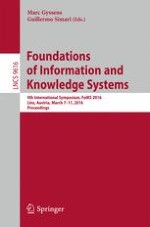2016 | OriginalPaper | Buchkapitel
Equivalence Between Answer-Set Programs Under (Partially) Fixed Input
verfasst von : Bernhard Bliem, Stefan Woltran
Erschienen in: Foundations of Information and Knowledge Systems
Aktivieren Sie unsere intelligente Suche, um passende Fachinhalte oder Patente zu finden.
Wählen Sie Textabschnitte aus um mit Künstlicher Intelligenz passenden Patente zu finden. powered by
Markieren Sie Textabschnitte, um KI-gestützt weitere passende Inhalte zu finden. powered by
